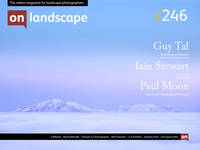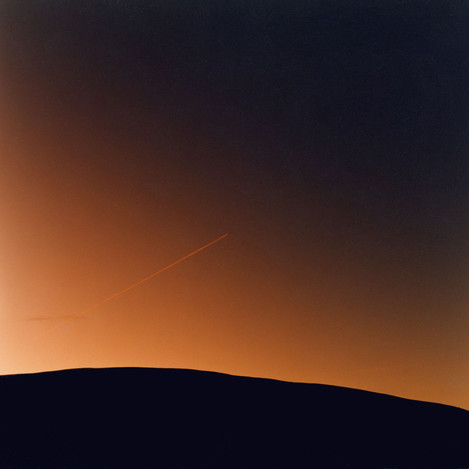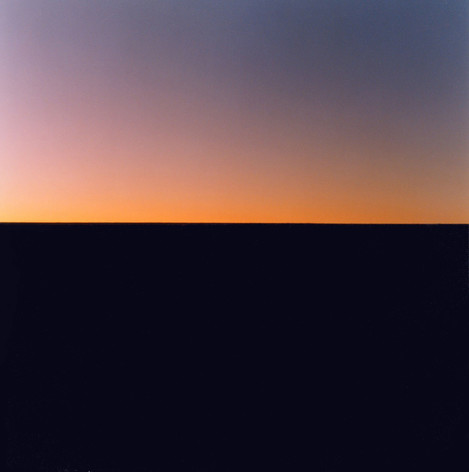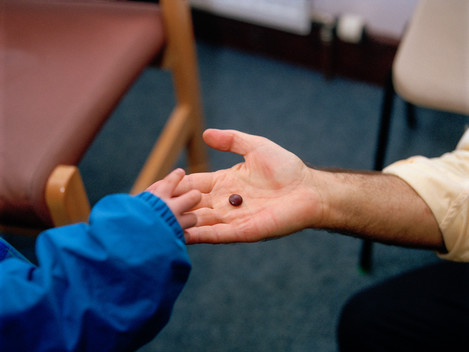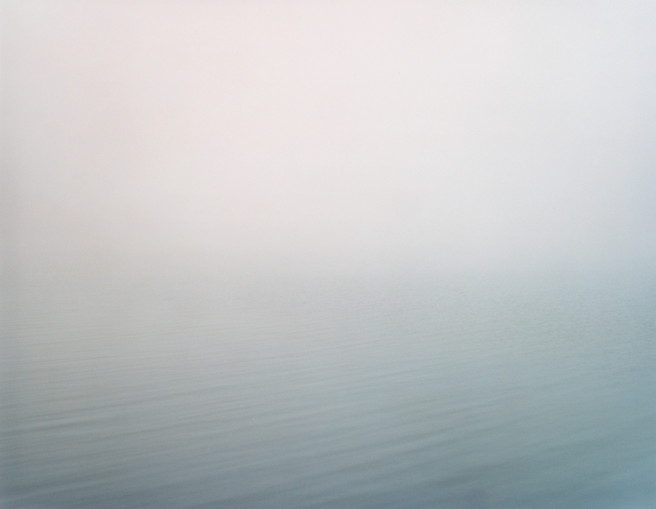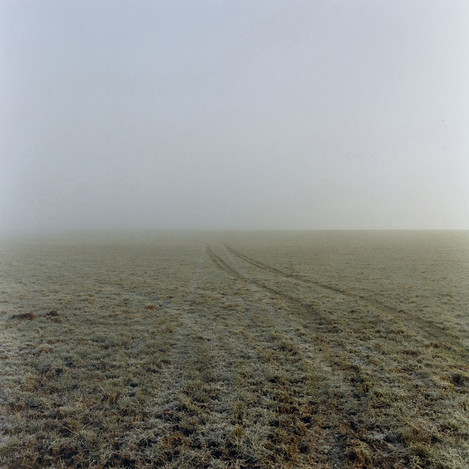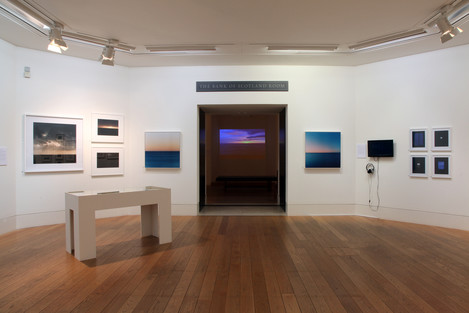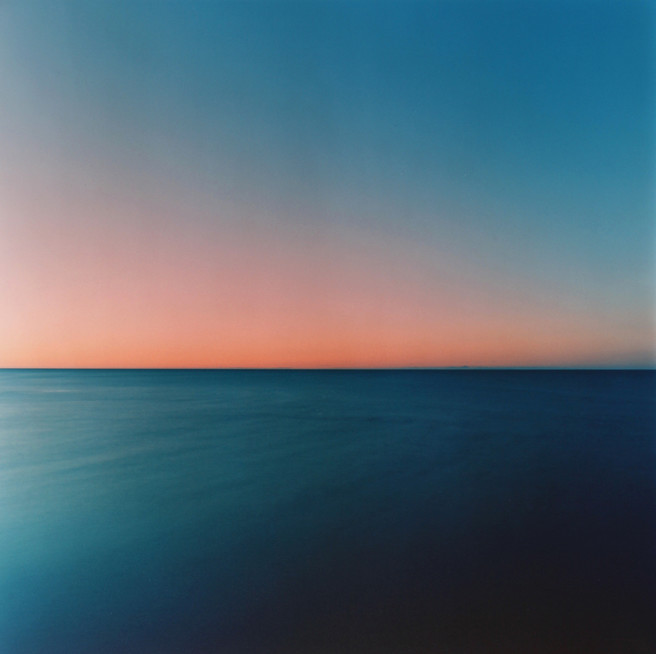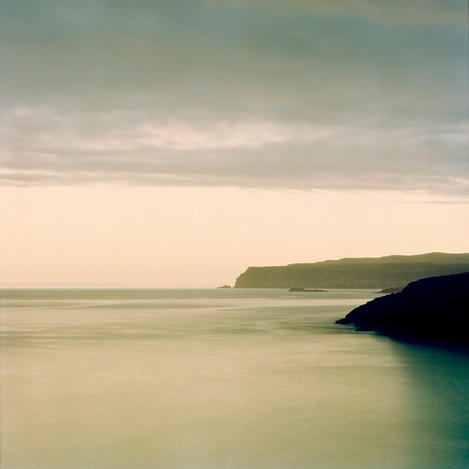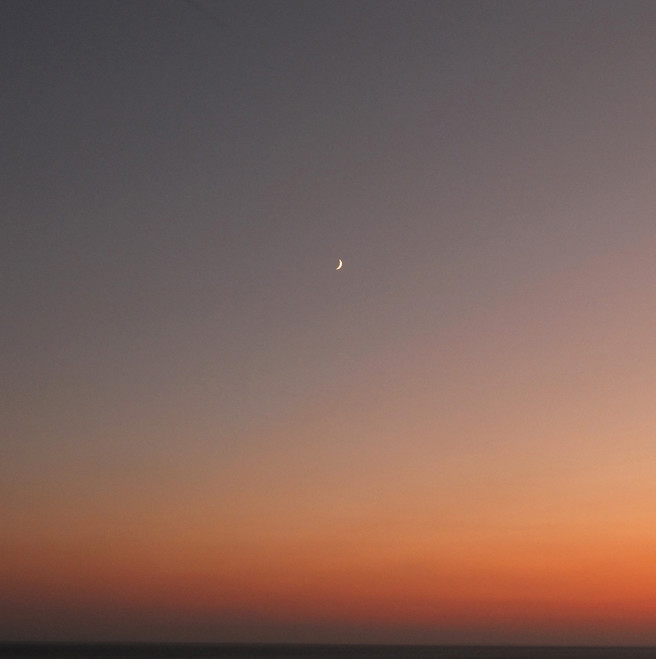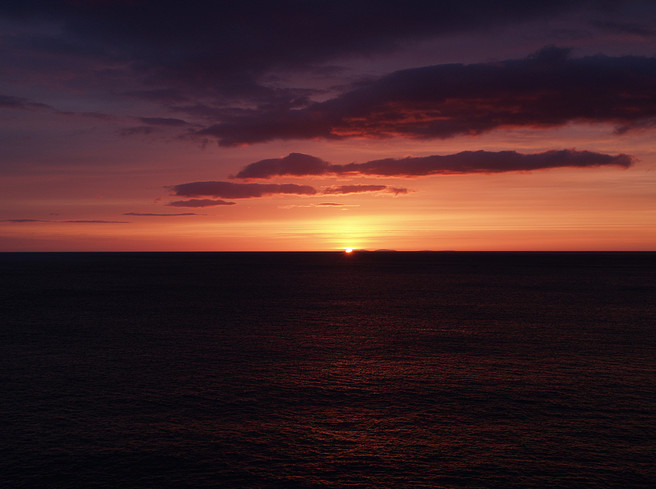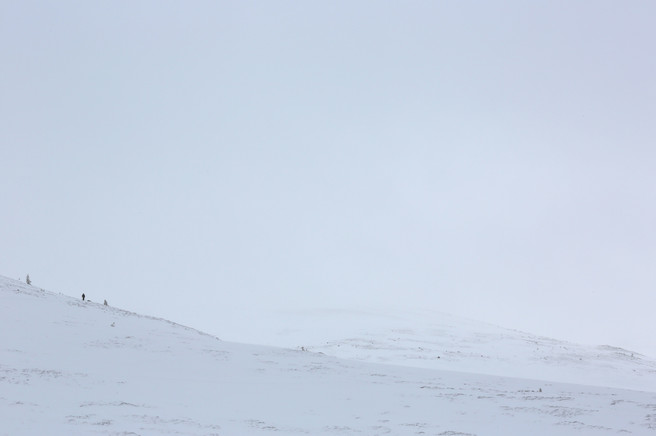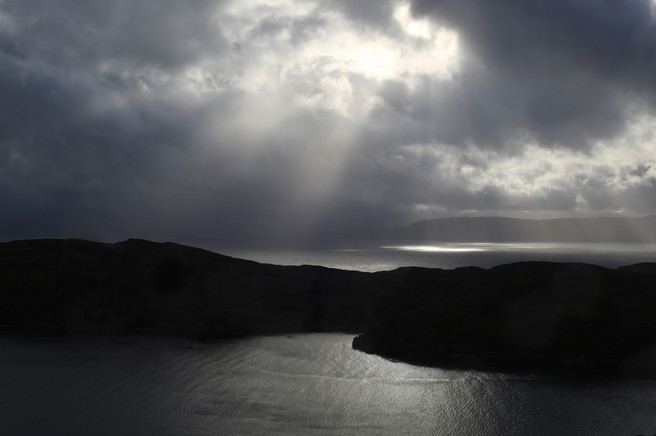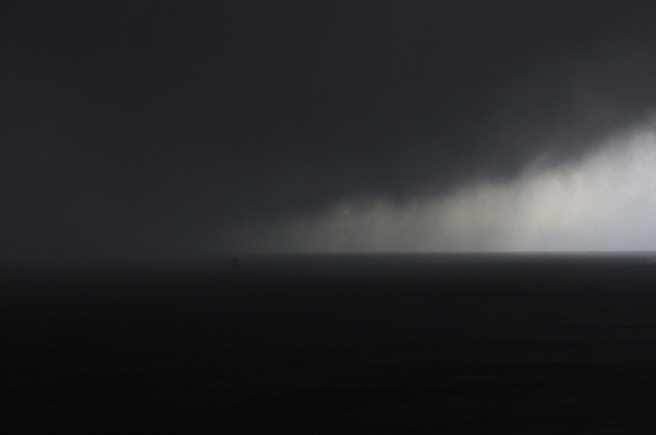An interview with Iain Stewart

Iain Stewart
Iain Stewart is a landscape photographer based in Edinburgh where he studied and taught photography at Edinburgh College of Art. His land & seascapes have featured in exhibitions at The Photographers’ Gallery in London, the International Center of Photography in New York and the Scottish National Portrait Gallery. Iain is currently showing in The Sheffield Project: Photographs of a Changing City at the Weston Park Museum, Sheffield. Publications include SEA CHANGE ; The Seascape in Contemporary Photography, LAND’S END/CAPE WRATH and INNER SOUND.

Charlotte Parkin
Head of Marketing & Sub Editor for On Landscape. Dabble in digital photography, open water swimmer, cooking buff & yogi.
We are always on the lookout for interesting projects or books, and Neil McIlwraith from Beyond Words suggested we took a look at INNER SOUND. Iain has a background in newspaper, documentary, and commercial photography and draws on this experience in his landscape work. We talked to Iain about his time at art college through to his residences, exhibitions and the background to his books.
Background
I was given my first camera in 1979 when I was 12 years old and pretty much straight away I loved making images. Everything else - the knowledge, the subject matter, the understanding, and the technique (all the baggage that you need but can also just get in the way) came later on. That first camera was purely about the joy of making pictures. Looking back I guess I photographed the family and all the things close and important to me. Which has remained constant.
As a teenager, I was a bit torn between studying English at University or going off to Art School but when I hit Sixth Form fortunately for me our lovely – but very elderly - art teacher retired and a dynamic, much younger teacher called Peter Dryland took over at my school. It was one of a series of pivotal moments which retrospectively you realise were life changing. The people who you learn from in your formative years have such a vital and powerful influence in your evolution. I’m still in touch with Pete today, forty years on. Under his guidance, I found the courage of my convictions to head off to Art School. He even helped reassure my family, as this was something completely unknown to them. I always knew I wanted to come back to Scotland where my family is from and amazingly I was the first kid at my school to get a place at Edinburgh College of Art, back in the mid-1980s. It was fantastic to be a teenager finding myself in such a rich creative environment surrounded by people with so many different artistic interests and talents. Art School can turn your head in so many unexpected directions.
Many of my friends were fine artists, in the School of Drawing & Painting in particular. This definitely had a huge influence on my work at this stage. Photography was always there but I took my time getting back there properly, dabbling in lots of new areas along the way - including a diversion into Textile Design, which my first degree was actually in. I eventually re-found photography again and took a Masters Degree. Again this was largely down to the gentle guiding hand of one man - Murray Johnston - who was the head of what at that time was a very small photography department at Edinburgh College of Art (ECA). Murray was a massive influence on me. In fact, I was his first and only Masters student - he sadly passed away before I finished my degree. But I learnt an incredible amount from him which still resonates with me even today. I feel incredibly lucky to have known him and to have spent a brief couple of years learning from him. He introduced me to so much – constantly sharing work and inspiring, learning about all aspects of the medium, devouring books and absorbing technical skills bit by bit.
As I grow older I realise too that he helped to show me, by example, how to be a good person. Murray was a catalyst in any social or creative situation - he helped people, that was his thing. There was no snag, no payback or thanks required, he just like helping people. That kind of thing is so rare in the creative world.
Taking colour photographs was risky and expensive for students. So when Murray organised my first exhibition it was a grainy black-and-white documentary series of photographs about the NHS in South Yorkshire where I grew up. They were a documentary series about my father & mother who were both GPs in the very working-class community where I grew up in Barnsley. In particular, I homed in on the relationships my father had with his patients; there were so many different layers to this. Observing him in his work environment, seeing the warmth of the relationship between him and the people he helped.
These pictures were incredibly important because it was at that point I knew I was completely hooked on photography and there was nothing else I wanted to do with my life. The subject matter was also a taste of what was to come, drawing on personal relationships but trying to develop & present these within a much more universal framework and touch on issues that would speak outwards to the viewer, not just inwards to the photographer.
So the doctor and patient pictures (‘Picture of Health’) helped crystallise the kind of photography I was interested in and I pursued that kind of documentary work through college and as I started my freelance photography career. This led to me working in newspapers - for the Scotsman, Scotland on Sunday, taking them ideas which got me regular freelance work. Another young part-time Art College tutor, the brilliant Murdo MacLeod, took me under his wing a bit although he wasn’t much older than me. Murdo worked for the Independent and The Guardian and he helped get me a foot in the door with some of the national newspapers as well. But of course, if someone recommends you you’ve got to live up to that recommendation. And I learnt very early on that you are only ever as good as your last picture. You need to prove it all over again the next time. I was made the Scotland on Sunday ‘Young Photographer of the Year’ in 1991 just as I left Art College so it was a fantastic launch and shop window for the start of my career. There was no Instagram or websites to promote yourself in 1991, the only way to get your work out there was to trudge around physically knocking on doors with your portfolio. So this level of publicity for my work was brilliant, however uncomfortable I might have been with that kind of attention on a personal level.
The kind of work I was doing and filled my portfolio also got me a couple of fantastic photographer in residence posts - one in Birmingham at the City Museum & Art Gallery and another in Sheffield for the Untitled Gallery. This was to document the World Student Games and the XVI Universiade Art Festival that surrounded it. This work is currently on show in a big retrospective (The Sheffield Project) at the Western Park Museum in Sheffield. These kinds of projects came just by scouring the small ads in art magazines and applying for everything; grants, residencies, commissions.
At this stage there wasn’t really any crossover between my freelance work and my own projects, I didn’t make money from exhibiting so paying the rent and putting food on the table was obviously the priority, but even at this early point, I knew how important it was to keep my own work going in the background. I liked the clean divide between ‘work’ and ‘personal’ and that’s still largely true even to this day, though they have maybe got a little bit closer together at times. It’s still rare that I am commissioned to produce landscape work for commercial projects and I am still very much known commercially for my work with people - documentary, lifestyle and portraiture.
Of course, if I knew what makes a good photograph I’d have retired long ago! I hope I would’ve shared the secret. It’s elusive, the chase that keeps you going. I taught photography for many years (at ECA) and even after 15 years all I can say is that if it’s good you just know straight away; whether you’ve taken it yourself or you’re looking at someone else’s work. What makes a great piece of music? It’s a very instinctive thing, there’s no magic formula, but if an image can speak to someone else, touch them and connect with their experience then it’s worked. If you learn something or see something in a new way and it has worked. If it’s you clicking the shutter if something aligns in your head and your heart then you know you’ve got it. Marrying your subject and content with the visual expression of the idea is really quite a trick. I love to learn from a picture, to experience emotion, to be educated. There is also a real balance to be struck between knowing and researching and your subject not over relying on the presentation of other content to back up the image. A good image should work as an image - so much of the photography I love just works on a purely visual level. A picture tells a story, speaks a thousand words. There’s a reason those well-worn phrases exist.
I’ve mentioned a couple of the people who are key in my development as a photographer but there are others. Chiefly my wife Natasha who has endless patience and is always the first person I bounce ideas and pictures off. In my career, I have met and worked with so many fantastic creative people - designers, artists and writers who I have learnt from and I’d also single out another great academic and champion of Scottish photography, Sara Stevenson. Sara was the curator of photography at the National Galleries of Scotland and I am fortunate to be able to count on her as a great friend and supporter of my work over three decades.
It was around the mid 1990s that things began to progress for me in both areas of my work. My freelance career was busy, I was teaching Photography at ECA two days a week and my own work was starting to move up a gear. Add in starting a family and this was a full-on period. But if you want to get something done, ask a busy person, as the saying goes. It’s good to be busy. So much better than the alternative.
I made the switch across to colour landscape work. The things I was learning in my commercial photography were helping me become a better photographer technically, teaching too invariably sharpens your practice and focuses the thinking – so all this fed into my own personal work. I’d always kept working away on my own projects and had been involved in quite a number of exhibitions since leaving Art School, including a couple of really nice group shows at the Scottish National Portrait Gallery and Street Level Gallery in Glasgow. I had a solo show that STILLS gallery toured called ‘unfinished dialogue’, a series of small colour images originating on SX70 Polaroid colour film that I combined with text pieces that were etched onto glass to give a series of shadow writing poems or texts. So I was gradually moving away from documentary photography in my own projects and evolving my own vocabulary. Robert Frank was a big influence around this period (The Lines of My Hand and Moving Out in particular). I was still very interested in soaking up other art forms too and was looking at work by painters as well as photographers. Mark Rothko & Agnes Martin and the work of the abstract Colourfield Expressionists - and I was delving back into German Romantic landscape painters like Caspar David Friedrich and Emile Nolde for inspiration.
All of these strands came together in a piece of work ‘From the Morning’ that I made for a big exhibition called ‘Light from the Darkroom’ at the National Galleries of Scotland in 1996. This was a series of 14 semi-abstract colour landscapes shot on medium format and really set at the template for my own working practice for the next 10+ years. It was quite a step into the unknown for my work, making strong references to painting and approaching landscape in a very instinctive, uncomplicated way. In many ways it was the polar opposite to my commercial work photographing people; in the landscape work, I removed all the people - and slowly began to remove all other points of reference too, working with just simple linear form and colour. ‘From the Morning’ was gentle, musical and I thought of the work like verses in a poem, or lines in a song. The pictures were a very simple sequence from dawn to dusk and inspired by the work of singer-songwriter Nick Drake. The title for From The Morning was inspired by the final song on his third & final album ‘Pink Moon’, made in 1972, just before his untimely death at the very young age of just 26.
I always played down the content and never really acknowledged this at the time, but I find it particularly poignant to be doing this interview in National Baby Loss Week - but around this time in 1995, my wife Natasha was expecting our first baby, who very sadly we lost. So at the time I never opened up to admit that these pictures came through the loss of our first child, it’s an incredibly difficult area even now. It’s a taboo subject that really doesn’t get aired in society that I found I was dealing with and absorbing into my work. The landscape as a space to heal and meditate is not a new concept but I think it is one that we are all increasingly aware of. It’s something that has really come to the fore over the last couple of years through lockdown, as we all undertake a massive re-evaluation of our relationship with our surroundings and the value of Nature. So From The Morning presented Landscape as therapy, but while the subject matter was introverted I wanted the pictures to reach out, in a very simple & honest way. In some ways, it was a retreat into myself but at the same time I was going out into the landscape to make sense of things. There didn’t seem to be any guidebook to what we were going through but I know personally immersing myself in the landscape and creating work was a great way of finding a route out of a difficult time.
It was around this time that I began working with Photographers’ Gallery in London and I visited Houston Fotofest and made a lot of good friends and contacts over in America. For the next decade, I exhibited a lot of work over there and struck up relationships with several galleries. Photography got a lot more respect in America at that point; it was rare to make a successful life as an exhibiting Fine Art photographer in the UK, it was so different in the States.
One of the high points was in 1998-99 when my work appeared in Sea Change at the Center for Creative Photography in Arizona alongside photographers like Hiroshi Sugimoto and Robert Adams. This toured to US venues including ICP in New York and for a while, I seem to be flying over to America quite a lot. I made so many good friends from this exhibition, meeting so many other photographers and curators that I’m still in touch with today. I kind of realised the exhibition was a big deal when I was being interviewed for the catalogue and was asked about other photographers whose work has inspired me. I mentioned a couple of names of very famous photographers and Trudy Wilner Stack (the curator) said “yes we thought about having them in the show but we decided to go with other work...”. I still haven’t really exhibited the seascapes from this period over in Scotland or the UK but I would love to one day.
INNER SOUND
What came first the images, the project, or the book?
The images came first. They were slowly assembled over a period of years and only started to take shape into a cohesive body of work at some point halfway through. The work was made on a number of wandering trips up to very familiar or particular places in the Highlands with a special connection. It was only with the distance of quite a bit of time and hindsight that I began to pin down the thread that connected them and think about resolving this into a body of work.
The book documents your journey through the grief of losing your father firstly to Alzheimer’s. How did you go about approaching the photography to capture the moods and the journey that you were on?
As with previous work the pictures were simply a reflection of what I was going through. Initially, they weren’t part of some conscious decision to deal with my fathers’ illness through photo therapy but invariably important event life events start to bleed through into the work you make and affect the way that you see in the world and the way that you reflect on the world. The metaphors of the early snowscapes came and found me, I didn’t seek them out. Being lost in whiteouts and blizzards were the start of that long, difficult journey. Returning to places from childhood holidays was a therapy, walking and trying to mend my head and my heart. Taking the pictures actually came later on, incidentally. The storm pictures were a more conscious decision to experience fierce weather, to photograph extreme weather conditions; I’m always reminded of Turner lashing himself to a mast in order to really experience a storm at sea. There were moments like that making these pictures when my tripod and I were all but blown off our feet. There was an exhilaration at times but so many of the Storm pictures were dark moments; premonitions and precursors of what was to come rather than a document of what had been, if that makes sense. There was a storm coming, but I didn’t know it when I was making those pictures. That’s happened for me before in this wild place (Cape Wrath/Sutherland).
The book is structured into two parts the first part Last Man on the Mountain starts with the story of finding the beach that you visited with your father when you were young. The second part ‘The Storm’ documents a passing storm by the sea. What visual (and non-visual) narrative did you want to leave the reader with when you were working on this project? Throughout the book, there are a number of texts. Some of these are Haikus, written by yourself, and some are from other writers. Are there any connections to these texts and/or authors? What extra narrative did you want to weave into the journey for the reader?
It’s very open-ended storytelling. There’s hints & clues that hopefully have plenty of room for the viewer to fill in the spaces with their own response and experiences. As with any narrative you hope to hold the viewers attention, but as I’m reflecting on real events in a way it’s a non-fictional narrative for me, so I’m trying to find a mode of communication that leaves gaps or introduces more elements to draw the viewer in. Above all I am trying to widen the scope of the story and touch on universal experiences and events; I don’t want it to be just about my journey or my father or my family, you always want your work to chime with the viewer and have a wider, shared resonance.
If I’m honest I guess I’m also intentionally slightly covering my tracks by adding these other layers, signposts and clues because I’m bearing my soul in the work and mining very personal emotions and events and that never gets any easier to do. In the same way, I didn’t open up at the time about the content of ‘From The Morning’, it took me a long time to tie ‘Last Man on the Mountain’ to the unfolding of my father's illness, let alone decide that I wanted to put it out there in book or exhibition form. It stayed in the drawer for years as I worked through the emotions. It would have stayed there permanently if not for the intervention and encouragement of others.
Dr Sara Stevenson has written an essay in the book - Touching the Land: “In the wide spaces, we have acute forms of measurement and location - we can feel distance in the coming in the rain or hear it in the far song of a bird”. Was there something about the wilderness of Scotland that connected with you in the making of Inner Sound?
The Highlands of Scotland has become the place where I make work. Certainly something about physically getting away from city life, from noise, worries and distractions and being immersed in a vast, almost empty, primal space has been the inspiration and backbone to my work for over twenty years. And you find yourself drawn back to special places you’ve connected with. The locations that crop up ‘INNER SOUND’ are all very strongly linked for me; tied to childhood memories, family events, places that I go to commune with the landscape and empty out my head or make sense of things, so it was inevitable that working through a lot of emotions around this period would happen in these places.
How did the project evolve? Did you have to refine the vision of what you wanted to achieve?
As I mentioned, the project was an ongoing, ever-growing series of land, sea and skyscapes over a period of some 4+ years; a box of 10’ x 8” workprints that just kept getting added to. The more I shaped and refined it, and it gathered meaning and depth, the longer it went back in the drawer as I wasn’t ready to work through all those emotions. That next stage of the project really came together thanks to the intervention of three key people - my wife Natasha, Sara Stevenson and Trudy Wilner Stack. Natasha has always tirelessly and selflessly encouraged me in my work; she saw something of value in the work and just pushed me to keep it going, just as she has throughout my whole career. I cannot really overstate how much I owe to her. I also showed an early draft of the project to both Sara and Trudy and they were both very encouraging. Trudy in particular proved to be the major catalyst for this project.
She had put together the Sea Change exhibition in Arizona in the 1990s that I mentioned earlier, and we had kept in touch in the intervening years. She was over in Scotland and asked what I was up to so I ran an early edit of the work past her. She has so much experience in curating and putting together exhibitions and publications it was a huge to have her help me get INNER SOUND over the finish line. I’d also sent an early draft to the writer Robert Macfarlane and when I met him in Edinburgh a year later, he pricked my conscience about finishing and publishing the book, so I should note that I owe him a debt of gratitude too. Trudy really made me think about tightening the editing and I cut down what was at one point a huge body of work with over 100 photographs into smaller and smaller edits until we ended with the final selection. It started to feel manageable as an exhibition or a book.
Were there many key photographs that you knew would succeed when you took them? Conversely, did some of your pre-planned images fail in execution?
I kept working on the selection during the editing process, thinking & re-thinking endlessly taking out & putting back until I knew it felt right. The key images never changed but I used a process of continual elimination because there was a lot of work. There’s still a nice big outtakes box! One of the reasons there are so many triptychs was I had always seen this series working in an exhibition on the wall in the gallery. It was largely due to Covid and lockdown that it became a book rather than pursuing exhibition plans, inevitably a lot of aspirations to show the work have had to be sidelined during the last couple of years. But I’m very proud of the book. Books last, it’ll outlast me.
Tell me what your favourite two or three photographs from the book are and a little bit about them.
Last Man
The tiny figure in the huge white expanse of a mountain landscape in the picture is the only direct figurative reference in INNER SOUND. There’s a lot going on with this tiny person. It’s me, it’s my father, it’s my son. My grandson too, whose appearance at the end of the book balances the loss of my Father at the start; both times we emerge into or out of the mist and infinite whiteness. The figure is the viewer too, and their way into the body of work. The snow and landscape dominate the figure, but he strides on towards us, through the incoming snow and encroaching whiteness.
The title of the first section of the book came from this picture, which also references my Father, a very specific memory when he got lost on a mountain and caused panic in the family. We all raced up the mountain to find him, to no avail and I ran back down to alert the emergency services, only to find him waiting, smiling at the car, asking where we all were because he was starting to get worried about us. That’s a very typical memory of him. It also refers to me, I’m aware that I am a bit of a stubborn outsider, which I get from my Father; and both figuratively and literally – I don’t mind being the odd one out in the room and I’m often the last one out in the landscape, waiting for the sun to set, or a particular cloud to perform, or as in this case, waiting for a figure to move to the right part of my viewfinder. In a literal sense, of course, the figure is the last man on the mountain, and it’s a document too.
Inner Sound
This picture is the view from the Applecross peninsula in Wester Ross, looking over the sound to Eilean Mor and Raasay. I was walking out from Toscaig to stay at Uags bothy on one of my autumn wanders for headspace. The process of walking, the placing of one foot after one foot is so cleansing, body and mind. Everything else fades into the ether and you connect properly with nature. I sort my head, I tidy up tangled thoughts, stop to write notes or thoughts and occasionally reach for my camera. On this occasion, I looked up to see the approaching rainclouds and gasped, and couldn’t reach fast enough in my rucksack for my camera. Technically this picture falls at the first fence as I’m shooting into the sun, and the rain, but it caught the moment and what was happening in my head. It’s the bridge into the second section of the book, we move from land to sea.
Outrun ii
Moving out of the vortex. Trying to beat the storm, escape the howling wind and seeing the snow pelting across the ocean towards me. The weather was fearsome, the change almost terrifying. I knew the snow was coming to hit me and I braced myself. You can’t see clearly in the printed book format, but there is a tiny fishing boat just about to be hit by the storm cloud out on the horizon in this frame. That must have been something, to be out at sea and hit by a whiteout. The title for this triptych was borrowed/inspired by Amy Liptrot’s incredible book of the same name, the subject matter struck a deep chord. Writers and poets feature quite a bit in INNER SOUND – Seamus Heaney, Kathleen Jamie, Robert Macfarlane and Norman MacCaig all had a hand in shaping my thinking in and around the time I was working on these pictures. Classical and Buddhist writings get a nod too. I often write down verses or quotes in my notebooks, which is the origin of the combination of the image/text in INNER SOUND. I’ve found text gradually creep back into my work, usually my own writing, INNER SOUND is a combination of ‘found’ and my own text.
You worked with Iain Sarjeant, at Another Place publishing to produce the book. How did the book come about?
As mentioned above it was having the extended time during lockdown to pour over the work for the book that in all probability might never have happened otherwise. But bizarrely because we worked on the publication over that isolated period we’ve still never actually managed to meet up in person. I had become aware of his publishing press a few years ago because he consistently put out such great wee publications. He is fantastic too on social media, which is where we got in touch originally and I think we just had a lot of common ground. There are plans of another collaboration in the next year or so, so watch this space.
Thanks very much for your time Iain.
Do you have a book or project that you'd like us to feature? Why not get in touch?

